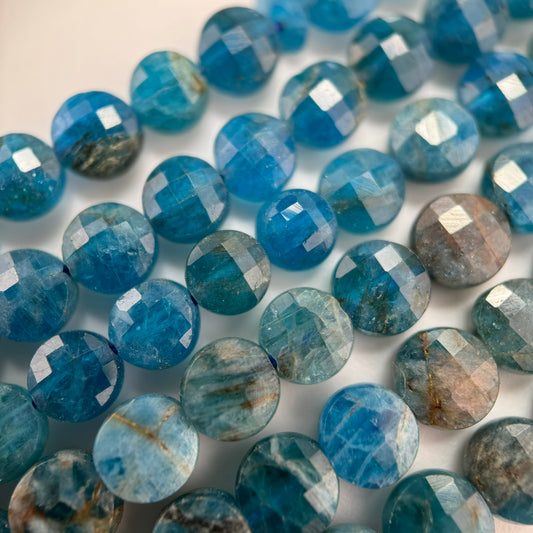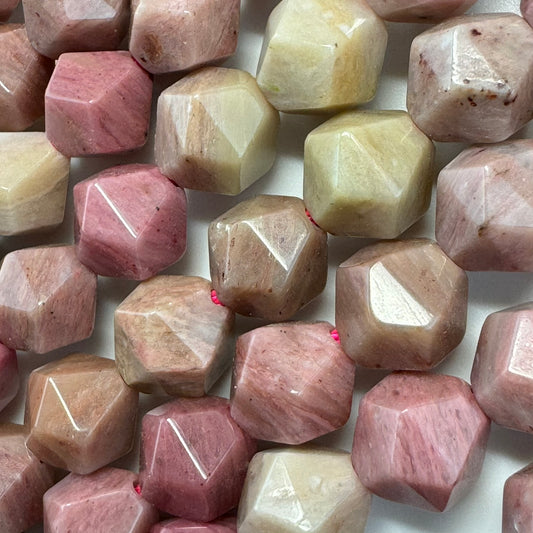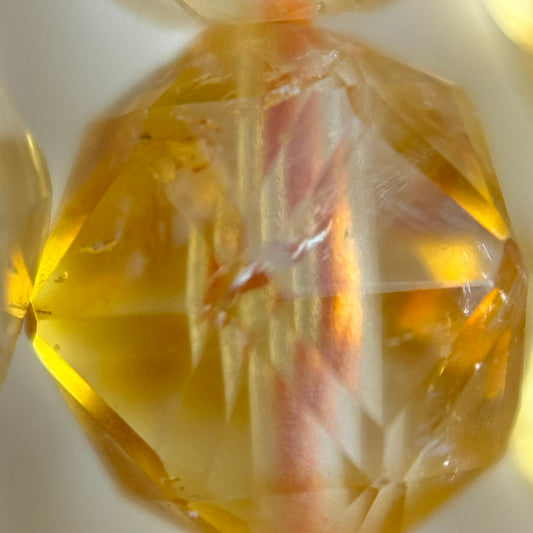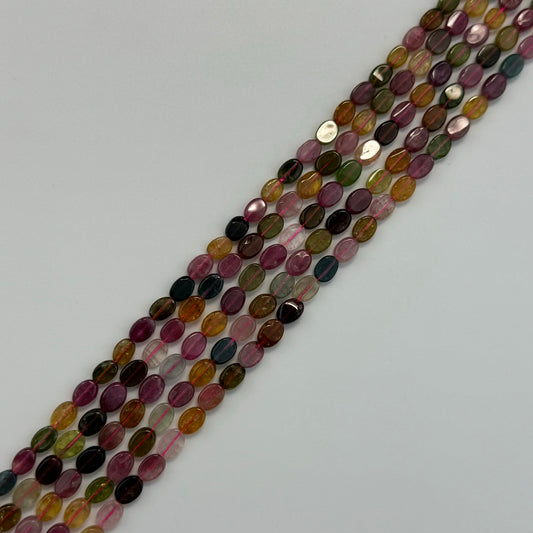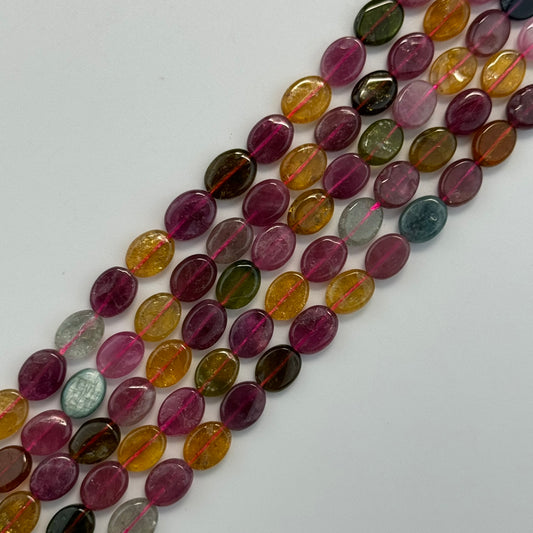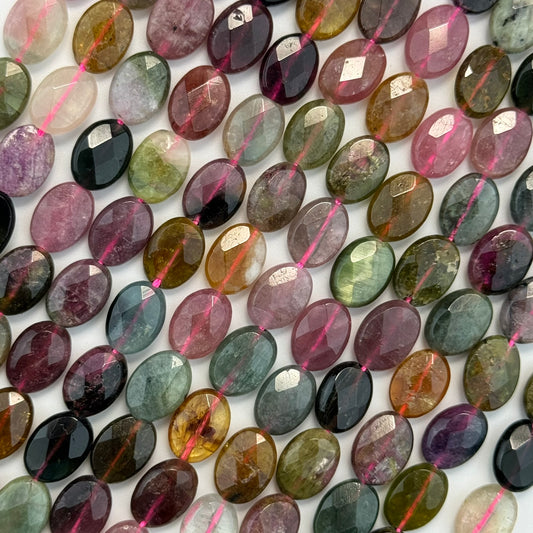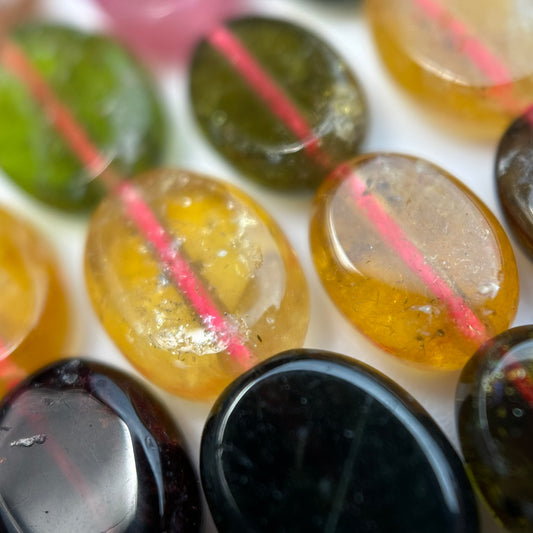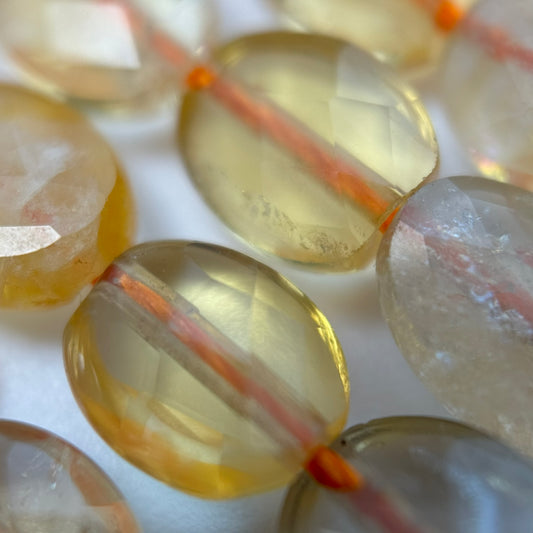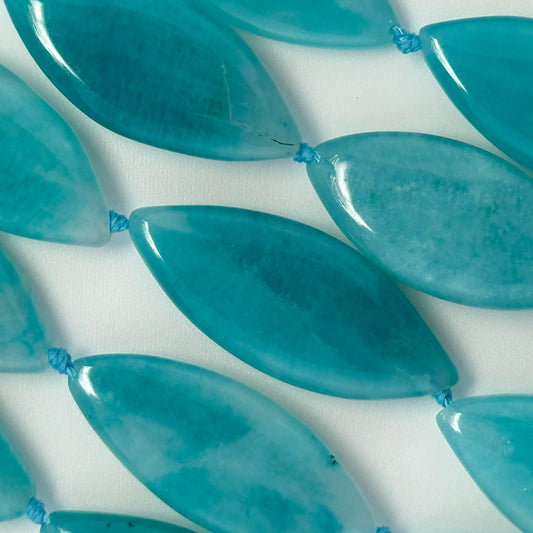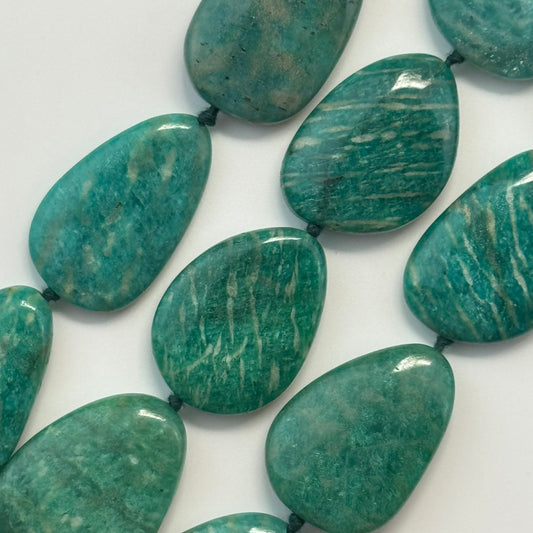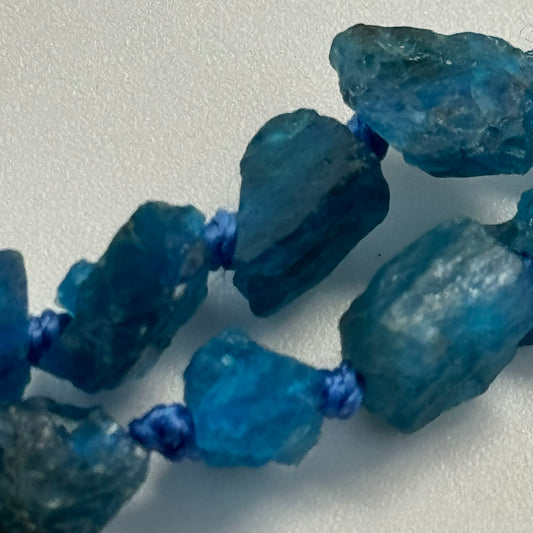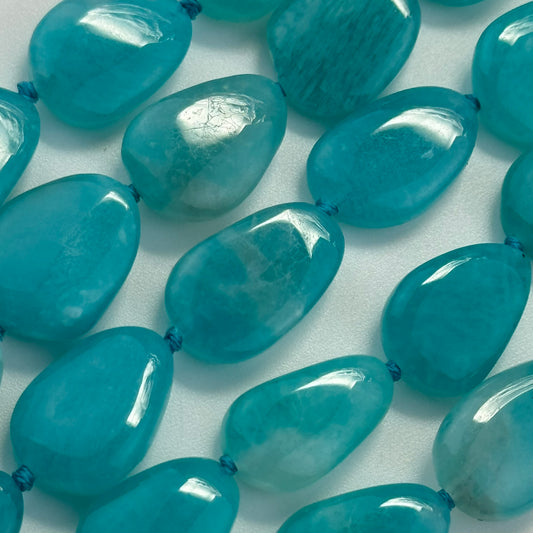Freeform Semi Precious Stone Beads
Freeform Semi Precious Stone Beads: Organic Shapes for Artistic Jewelry
Embrace the natural beauty of freeform semi-precious stone beads, where each bead showcases unique organic shapes and natural contours. These one-of-a-kind gemstone beads celebrate the raw, untamed beauty of nature in your jewelry designs.
Why Choose Freeform Beads
- Natural Organic Shapes: Each bead is uniquely shaped by nature, ensuring no two pieces are identical
- Artistic Expression: Freeform designs allow for creative, unconventional jewelry styles
- Natural Gemstones: Authentic semi-precious stones including agate, jasper, and quartz varieties
- Bohemian Aesthetic: Perfect for creating earthy, nature-inspired jewelry collections
Creative Jewelry Applications
- Artisan Necklaces: Combine freeform beads for organic, flowing designs that mimic nature
- Boho Bracelets: Create relaxed, casual styles with mixed freeform shapes
- Statement Pieces: Use larger freeform beads as eye-catching focal points
- Mixed Shape Designs: Pair with geometric beads for contrast between organic and structured
Design Strategies for Freeform Beads
- Embrace asymmetry when stringing freeform beads for natural, organic flow
- Mix different sizes and shapes to create textural interest and visual movement
- Use freeform beads as centerpieces surrounded by more uniform shapes
- Combine with earthy tones and natural materials for cohesive boho designs
- Allow the natural shape of each bead to guide your design direction
Natural Beauty & Authenticity
Every freeform semi-precious stone bead preserves the natural character of the gemstone, hand-selected by expert gemologist Reza Piroznia. Ideal for jewelry artists who appreciate the unique, organic beauty that only nature can create.
Frequently Asked Questions
What wire gauge is best for freeform beads with irregular shapes?
Use 0.019 to 0.024 inch (19-21 gauge) flexible beading wire for freeform beads, as the varied shapes require stronger wire to handle irregular hole sizes and weight distribution.
How do you account for irregular hole sizes in freeform beads during stringing?
Test each bead's hole size before stringing, use appropriately sized wire that fits the smallest hole, and add small spacer beads to protect wire from sharp edges in irregular holes.
What is the proper crimping technique for freeform beads with uneven weight distribution?
Use double-crimp technique with quality crimp tubes, ensure proper wire tension accounting for bead weight variations, and test the connection before trimming to handle uneven stress points.
How do you calculate spacing for freeform beads with varying sizes?
Measure each bead's largest dimension, plan spacing based on the average size plus 1-2mm, and use a bead board to visualize the layout before stringing to ensure balanced design.
Are freeform beads suitable for professional wire wrapping techniques?
Yes, but use 18-22 gauge wire depending on bead size, wrap carefully around irregular shapes, and ensure wire doesn't stress weak points or sharp edges in natural freeform shapes.
What is the recommended thread tension for freeform beads to prevent breakage?
Maintain moderate to firm tension, allowing slight flexibility for irregular shapes, and ensure consistent tension throughout to prevent stress points that could cause wire failure.
How do you prevent freeform beads from rotating or shifting during wear?
Use quality flexible wire with proper crimping, add small spacer beads between irregular shapes, and consider using thread conditioner or bead caps to minimize movement.
What tools are essential for professional stringing of freeform beads?
Essential tools include crimping pliers, wire cutters, round-nose pliers, bead reamer for hole adjustment, bead board for irregular layout, and quality crimp beads for secure finishing.
Can freeform beads be used in multi-strand designs with weight considerations?
Yes, but balance weight distribution across strands, use appropriate wire gauge for each strand, and ensure multi-strand clasps can handle the combined weight of irregular beads.
How do you test the durability of freeform bead jewelry with irregular shapes?
Gently pull on the stringing material, check for proper crimp compression, test each bead's movement, ensure no sharp edges contact the wire, and verify clasp function before finishing.
What is the maximum recommended weight for freeform beads in necklace designs?
Consider the combined weight of irregular beads—use 0.024 inch wire for heavier pieces (up to 15 pounds), and distribute weight evenly to prevent stress concentration on wire.
Are freeform beads compatible with elastic stringing for adjustable designs?
Yes, but use high-quality elastic (0.7-1.0mm), test each bead's hole size, tie secure surgeon's knots, and consider bead caps to protect elastic from irregular bead edges.
How do you achieve professional finish with freeform beads of varying sizes?
Use quality crimp covers, ensure wire ends are properly trimmed, add jump rings for clasp attachment, and polish finished jewelry to remove handling marks while preserving natural shapes.
What is the recommended bead arrangement technique for freeform beads?
Lay beads on a bead board first, arrange by size and color, test the design flow, ensure weight balance, and string in order while maintaining consistent tension for professional results.
Can freeform beads be wire-wrapped for pendants or focal pieces?
Yes, use 18-20 gauge wire for wrapping, create secure frames around irregular shapes, and ensure wire wraps don't stress weak points or natural fractures in freeform stones.
How do you prevent wire abrasion from irregular freeform bead edges?
Use spacer beads between freeform beads, apply thread conditioner, ensure smooth hole edges with a bead reamer if needed, and use quality flexible wire designed for jewelry making.
What is the proper technique for attaching clasps to freeform bead jewelry?
Use crimp beads or tubes with double-crimp technique, attach jump rings if needed for weight distribution, ensure clasp is properly secured, and test the connection before final trimming.
How do you handle freeform beads with natural cracks or inclusions during stringing?
Test each bead's integrity, avoid stringing beads with structural weaknesses, use gentle tension around natural inclusions, and consider reinforcing with wire wrapping if needed for stability.
Where can I buy high-quality freeform semi-precious stone beads for professional jewelry making?
Reza Gem Collection offers premium freeform beads verified by certified gemologist Reza Piroznia, ensuring quality natural shapes suitable for professional jewelry making projects.



